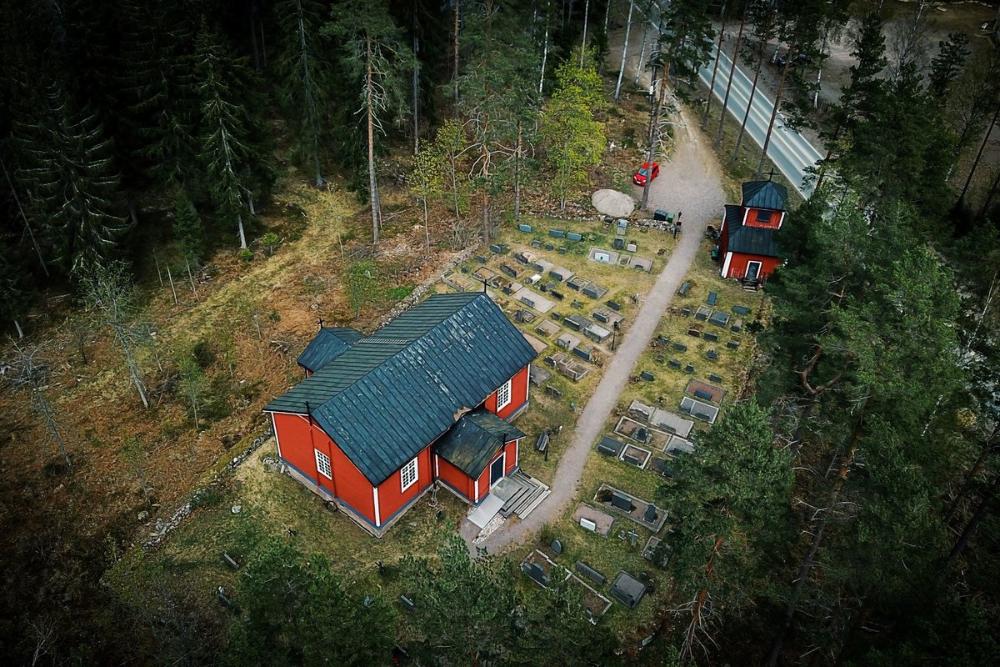Evästeet
EvästeetLinkki avautuu uudessa välilehdessä
Kärkölä village church is a small wooden church in Kärkölä village in Pusula, Lohja. The church was constructed in 1842 at a time when only a small path led from Kärkölä to the main church in Pusula.
Permanent settlement was established in Kärkölä wilderness as late as in the early 1760s. About 20 years later the villagers made an initiative to build their own church and to establish their own graveyard. On the first try permission to build a church was not given due to the villager’s unclear property rights and because the villager’s capability to construct a church was doubted. In 1783 Turku cathedral chapter granted the villagers permission to build a church and graveyard of their own.
The building work was started half a century later. All villagers of Kärkölä took part in building the church according to their own strength, wealth, and capabilities. The timbers that were used in building the Kärölä church were donated to the community. All the nails and hinges were forged by a local smith in Kärkölä. Everything was made by the villagers of Kärölä in Kärölä. The only exception is a beautiful and rare pulpit from the 17th century and a votive ship hanging from the ceiling. Their origins are not known.
Writing on the church wall tells about the construction of the church: “In 1840 has the construction of this Lord’s hall started. In 1842 it was finished.”
The altar painting of the church was painted by artist Eeli Jaatinen originally for the Terijoki church in 1941. The theme of the painting is Jesus calming a storm at lake Genesareth. Jaatinen painted the altar painting in the sacristy of Terijoki church and the painting. The painting hung on the wall of Terijoki church during only one service. It was then evacuated to Helsinki due to the nearby battlefront of the Continuation War. The painting never returned to Terijoki and it was later purchased from Jaatinen by the villagers and former villagers of Kärkölä. Altogether 33 000 Finnish markka were raised in fundraising.
The women of Kärkölä wove linen rugs for the church using flax that was grown in Kärkölä. Weft was made of Tilia cordata. The rugs were finished by the 100th anniversary of Kärölä church, which was postponed by six years due to the war.
The graveyard beside the church was already in use before the church was completed. The bell tower was built about 20 years later than the church. Until then the church bell was hung between two birches.
Kärkölä village church is the oldest remaining building in Kärkölä village. Cherishing it and treasuring it is an honor and it gives recognition to the people who settled in the wilderness of Kärölä during the 18th and 19th centuries. It reminds us of their work for future generations.

EvästeetLinkki avautuu uudessa välilehdessä